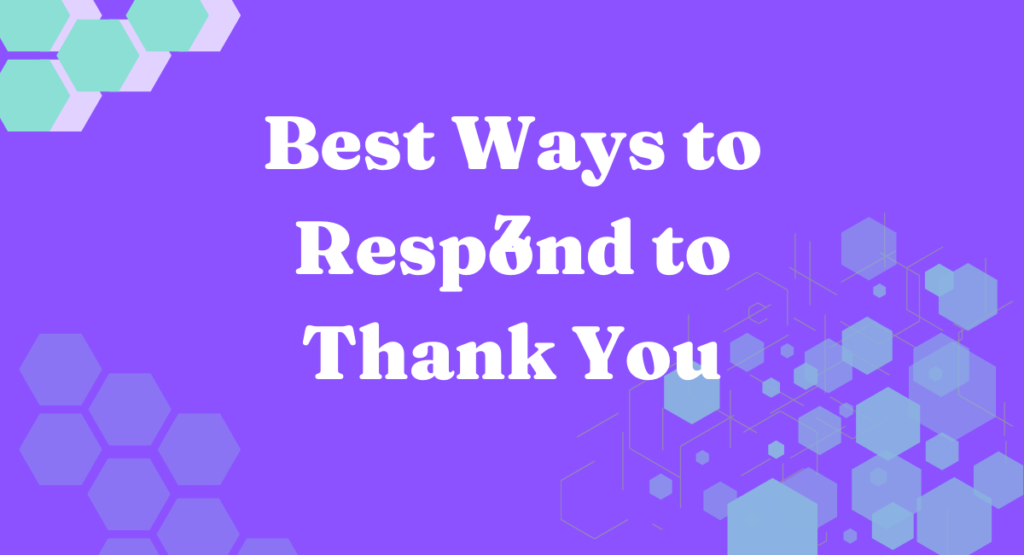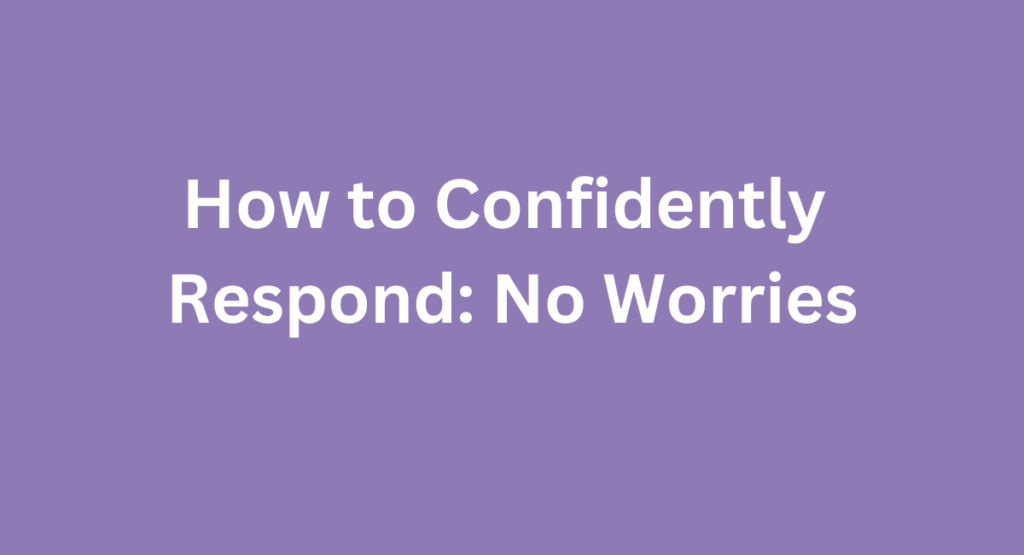
No worries! You can simply reply with “No problem” to express the same sentiment.
It’s a casual and friendly way to reassure someone. When it comes to responding to “No worries,” the key is to keep your reply informal and positive. It’s a common phrase used to convey that there is no need to be concerned or apologetic about something.
By replying with “No problem,” you are letting the person know that everything is okay and there are no hard feelings. This simple exchange can help maintain a positive and relaxed atmosphere in your communication. So, next time someone says “No worries,” feel free to respond with “No problem” to keep the conversation light and amiable.
When a guy says no worries?
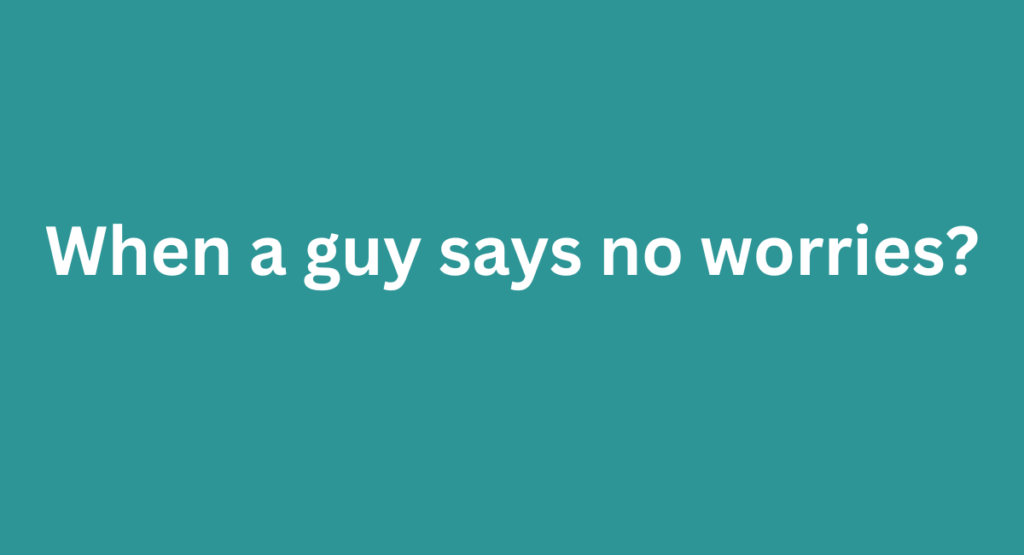
Do you find yourself wondering what it means when a guy says “no worries”? Well, this commonly used phrase is often used by men to convey that there is no need to be concerned or stressed about a situation. When a guy says “no worries,” it is usually a way of reassuring you that everything is under control or that there is no problem. It’s a casual and laid-back response that signals a sense of ease and a desire to alleviate any concerns you may have. So, the next time a guy tells you “No worries,” rest assured that everything is fine and there is no need to fret.
How To Reply No Worries
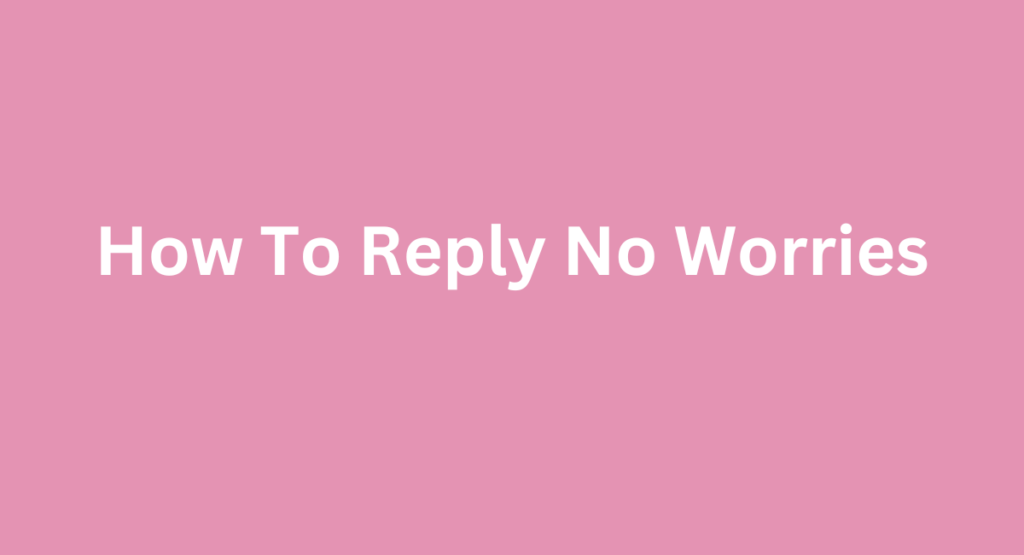
Sure, you can reply to “no worries” with “thank you” or “I appreciate it. ” It’s a friendly way to acknowledge someone’s reassurance and show your gratitude. This kind of response helps build positive relationships and good communication.
How To Reply No Worries:
- Embrace the Positive Vibe: Responding with “No worries” is a pleasant way to acknowledge and accept a situation without any negative connotations. It conveys understanding and an easy-going attitude.
- Offer Alternatives: If you want to add a touch of warmth and friendliness to your response, consider using phrases like “It’s all good,” “Don’t sweat it,” or “No problem” in place of “No worries.” They all convey a similar message of reassurance and understanding.
- Appreciate the Gesture: “No worries” can also serve as a polite way of showing appreciation for someone’s consideration or kind actions. It implies that any inconvenience or concern is minimal and not a cause for distress.
- Adaptive Responses: Depending on the context, you can tailor your response with variations such as “It’s fine,” “It’s all okay,” or “I understand,” while maintaining a casual and reassuring tone.
- Stay Casual: When replying with “No worries,” keep your tone light and friendly. It’s ideal for informal settings where you want to reassure someone without delving into a lengthy explanation or apology.
Responding with “No worries” effortlessly conveys understanding, acceptance, and positivity in various social interactions. Remember, the key is to maintain a relaxed and empathetic demeanor in your responses.
No Worries Meaning
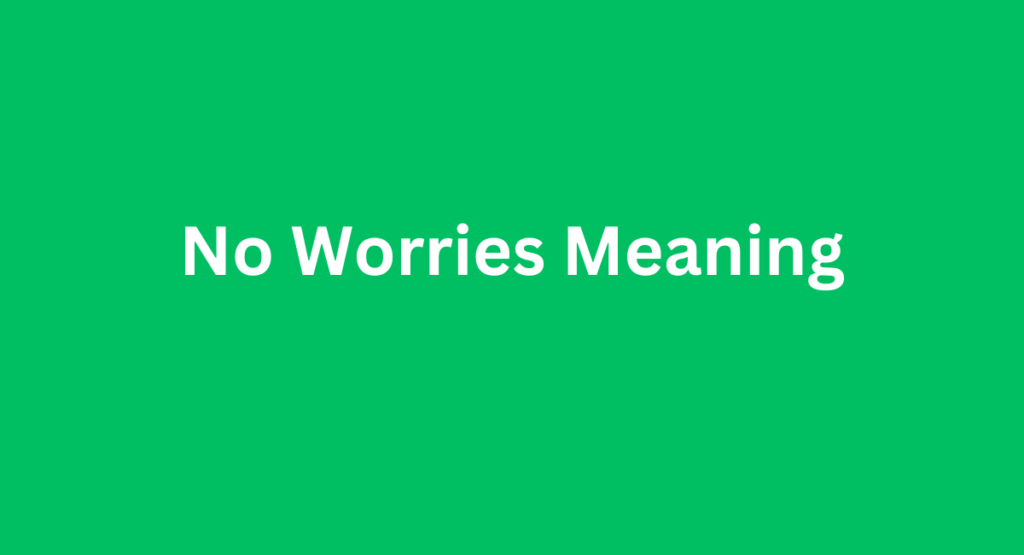
When someone says “no worries,” it generally means that there is no need to be concerned or anxious about a particular situation. When replying to someone with these words, you can simply say “Thank you” or “Alright” to acknowledge their reassurance.
This response aims to affirm that you appreciate their understanding and assurance.
Understanding No Worries
You’ve probably heard “no worries” countless times — it’s a frequently used phrase in casual conversations, often serving as an affirmation. But what exactly does it mean? Let’s dive into the different aspects of the phrase and its implications.
Contextual Interpretation
- Casual Affirmation: The phrase “no worries” is often used to convey reassurance, indicating that there is no need for concern or apology in a particular situation. It reflects a laid-back and understanding attitude.
- Dismissal of Gratitude: In some instances, “no worries” is used in response to a thank you, suggesting that no gratitude is necessary, as the action or favor was done gladly and without expectation of recognition.
Cultural Significance
- Australian Origin: “No worries” is believed to have originated from Australian English, reflecting the easy-going and relaxed culture of the country. It has since gained popularity in various English-speaking communities worldwide.
- Universal Usage: The phrase transcends borders and is widely understood and adopted in different English-speaking cultures, symbolizing a nonchalant and accommodating approach.
Practical Applications
- Everyday Usage: “No worries” is a versatile and commonly used phrase in everyday conversations, often serving as a casual response to express understanding, forgiveness, or reassurance.
- Professional Context: Despite its informal nature, the phrase can also be employed in professional settings to convey a relaxed and approachable demeanor without compromising professionalism.
In essence, “no worries” encapsulates a spirit of understanding and acceptance, serving as a reassuring and amiable expression in various social contexts. Its widespread and inclusive usage reflects its ability to foster a positive and affable atmosphere in interactions.
Professional Way To Say No Worries
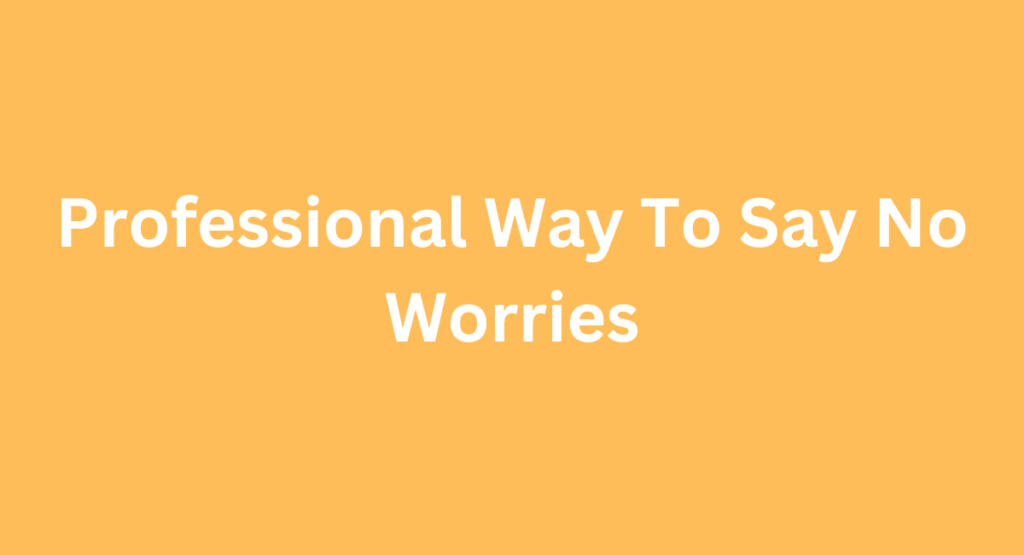
Responding with “You’re welcome” or “No problem” is a professional way to convey no worries. It acknowledges the appreciation gracefully and emphasizes that it was a non-issue.
Whether you’re in the midst of a professional conversation or communicating with colleagues, finding the right way to express “no worries” is essential for maintaining a respectful and considerate dialogue. Here are some professional ways to convey “no worries” effectively:
- Acknowledging Understanding: When replying with “acknowledged,” you’re essentially recognizing the situation without expressing worry or stress. It conveys a strong sense of assurance and understanding without minimizing the issue or concern.
- Certainly, I Can Accommodate That: This response indicates a proactive approach to addressing the concern or request, demonstrating complete cooperation and a willingness to resolve any potential issues.
- Understood, I’ll Ensure the Issue is Resolved: By utilizing this phrase, you confirm comprehension of the situation and assure the person that you’re taking the necessary steps to address any concerns or issues.
- I’ll Take Care of It: This phrase conveys a sense of assurance and responsibility, indicating your commitment to resolving the matter at hand without any worries.
- Not a Problem, I’ll Handle It: This response emphasizes your capability and confidence in managing the situation, reassuring the other party that their concerns are being addressed efficiently.
Here are 10 professional replies to “No worries”
– I appreciate your understanding.
– Thank you for your consideration.
– Your flexibility is much appreciated.
– I’m grateful for your understanding.
– I value your assurance, thank you.
– Your understanding is noted and appreciated.
– I’m thankful for your accommodating response.
– I appreciate your professionalism in handling this.
– Thanks for your understanding, much obliged.
– Your flexibility is acknowledged and valued.
Each of these responses enables one to express understanding and assurance professionally without dismissing the significance of the issue at hand. It’s important to consider the context and the relationship with the individual when selecting an appropriate response.
When Someone Texts No Worries Replay
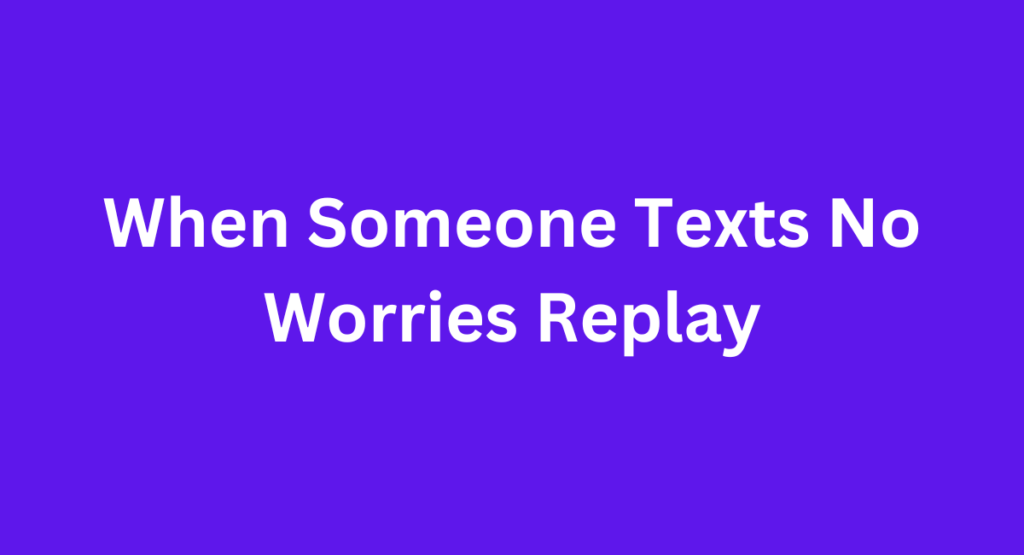
Replying with “no worries” is a simple yet effective way to show that you are cool and relaxed. It conveys a sense of understanding and reassurance, making the recipient feel at ease. By using this phrase, you can communicate your laid-back attitude while maintaining a positive and friendly tone.
Tips For Replying To “No Worries” Texts
- When someone sends you a “No worries” text message, here are some effective ways to reply graciously:
- Acknowledge: Express gratitude for their understanding and consideration.
- Reassure: Confirm that everything is resolved or that you appreciate their understanding.
- Show Appreciation: Thank them for their understanding or flexibility.
- Offer Help: Consider offering assistance or support in return for their understanding.
- Stay Positive: Keep the tone positive and appreciative in your response.
Here are 10 text-style replies to “No worries”
– No prob! 😊
– Don’t stress it! 🤷♂️
– All good! 👍
– No biggie! 😌
– Cool, thanks! 🙌
– No sweat! 😅
I appreciate it! 🤝
– No issues at all! 🚫
– Thanks, no worries on my end! 😊
– Sure thing! 🌟
Reply No Worries In Email
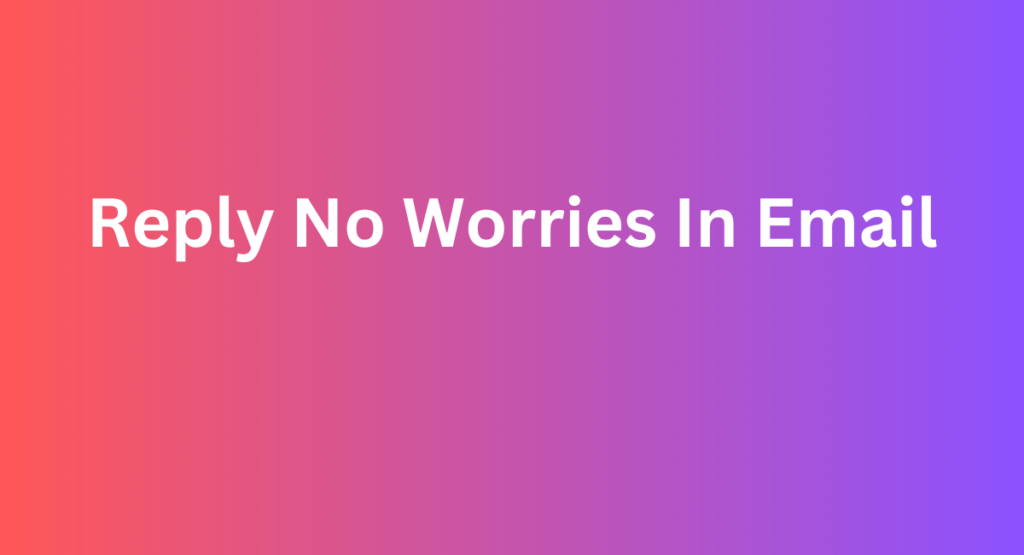
When responding to a message with “no worries,” you can acknowledge the sender’s concerns while assuring them that everything is under control. It’s a friendly and reassuring way to respond to any uncertainties or concerns presented in an email.
Have you ever felt unsure about how to reply to an email with the phrase “No worries”? This casual phrase is often used to reassure someone that there is no need to be concerned or stressed. It’s a friendly way to acknowledge an email, while also alleviating any potential worries the sender may have had.
In this blog post, we will explore some effective ways to reply with “No worries” in an email, ensuring that your response is both genuine and fitting for the situation.
Tips For Replying No Worries In Email:
- Clarify the situation: If the sender’s email expressed concern or apology about something, use your reply to reassure them that everything is alright.
- Example: “No worries at all! I completely understand the situation and there is no need to apologize.”
- Show empathy: Demonstrate your understanding and let the sender know that their concerns are valid but unnecessary.
- Example: “Thank you for your email! I appreciate your concern, but there’s no need to worry. Everything is under control.”
- Offer alternatives or solutions: If the email touched upon a problem or issue, provide a helpful suggestion or an alternative approach to resolve it.
- Example: “I understand your worries, but let’s explore some alternatives to tackle this. How about we try [insert suggestion] instead? It might work better for both of us.”
- Express gratitude: Acknowledge the sender’s concern and show your gratitude for their attention to detail or thoughtfulness.
- Example: “Thank you for bringing this up, but please don’t worry. Your attention to detail is greatly appreciated!”
- Use positive language: Ensure your reply is positive, reassuring, and conveys the message.
- Example: “No worries whatsoever! I’m confident we can find a solution together. Let’s get started and tackle this challenge head-on.”
Here are 10 email-friendly replies to “No worries”:
– **Noted, thank you!**
– **Appreciate your understanding.**
– **No problem at all!**
– **Thank you for your flexibility.**
– **All good on my end.**
– **I appreciate your reassurance.**
– **No concerns here, thanks!**
– **Thanks for your understanding.**
– **No worries, and thanks again!**
– **I’m grateful for your flexibility.**
Remember, using “No worries” in an email is a friendly way to acknowledge the sender’s concerns and ease any worries they may have had. By offering reassurance, empathy, alternatives, expressing gratitude, and maintaining a positive tone, you can respond effectively to any email with ease.
So, the next time you find yourself unsure of how to reply, just keep these tips in mind and respond confidently with “No worries!”
Polite Response No Worries
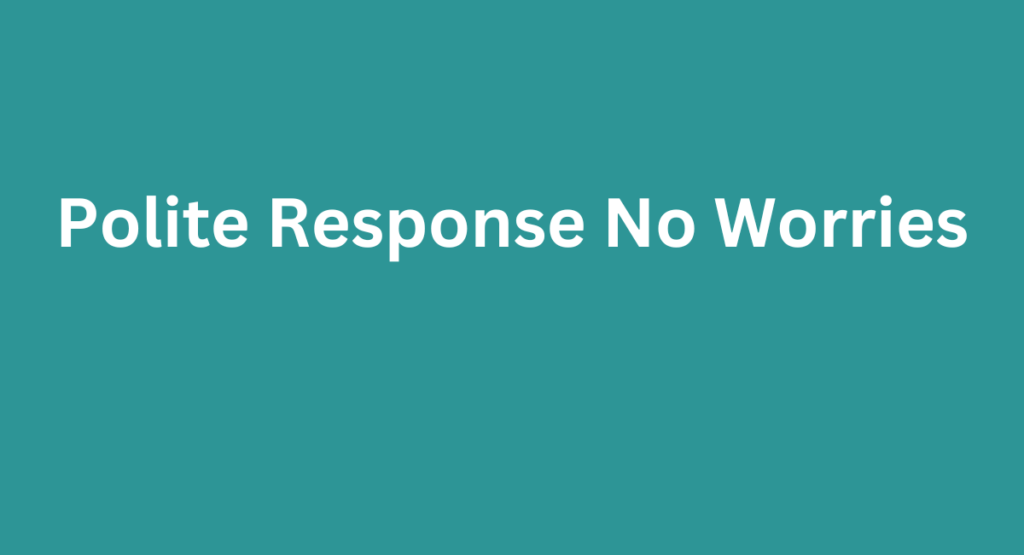
Responding with “No worries” is a polite way to assure someone that everything is fine. It’s a friendly and casual way to convey understanding and acceptance in conversation.
Polite Response: No Worries
No matter the situation, a polite reply is always appreciated. Responding with “no worries” is a calm and reassuring phrase that instantly puts others at ease. Whether you find yourself needing to alleviate someone’s concerns or respond to a gracious apology, using the phrase “no worries” is a simple yet effective way to express your easygoing nature and reassure others that everything is okay.
In this section, we will explore several polite responses using the phrase “no worries” in various scenarios.
Scenarios Requiring A Polite Response
In many situations, a simple “no worries” is enough to convey a considerate and kind response. Let’s take a look at some scenarios where a polite reply with “no worries” is appropriate:
- Offering assistance: When someone apologizes for requesting your help, you can reply with “no worries” to assure them that you are happy to assist.
- Accepting apologies: If someone apologizes for a mistake or a delay, responding with “no worries” communicates that you understand and there are no hard feelings.
- Misunderstandings: In the event of a misunderstanding or miscommunication, using “no worries” can diffuse any tension and let the other person know that you hold no concerns.
- Cancelled plans: When someone cancels plans or is unable to meet, responding with “no worries” shows understanding and flexibility, without making the other person feel guilty.
Here are 10 polite responses to “No worries”
– **I appreciate your understanding.**
– **Thank you for your consideration.**
– **Your flexibility is much appreciated.**
– **I’m grateful for your understanding.**
– **I value your assurance, thank you.**
– **Your understanding is noted and appreciated.**
– **I’m thankful for your accommodating response.**
– **Thanks for your understanding, much obliged.**
– **Your flexibility is acknowledged and valued.**
– **I appreciate your professionalism in handling this.**
Tips For A Polite Response Using “No Worries”
When providing a polite response with “no worries,” remember these essential tips to ensure your message comes across effectively:
- Use a friendly tone: The tone of your response sets the mood for the conversation. Be warm and friendly to show your understanding.
- Be genuine: Authenticity is key. Ensure that your reply aligns with how you genuinely feel.
- Offer reassurance: Assure the other person that their actions or mistakes do not affect your opinion of them, emphasizing that there are no hard feelings.
Remember, a polite response with “no worries” is a simple yet powerful tool that can help maintain positive relationships and alleviate any concerns. By using this phrase, you are showing empathy, understanding, and an easygoing nature that others will appreciate.
So, the next time you need to respond to a situation, consider using “no worries” to convey a gracious and polite response.
Friendly Response No Worries
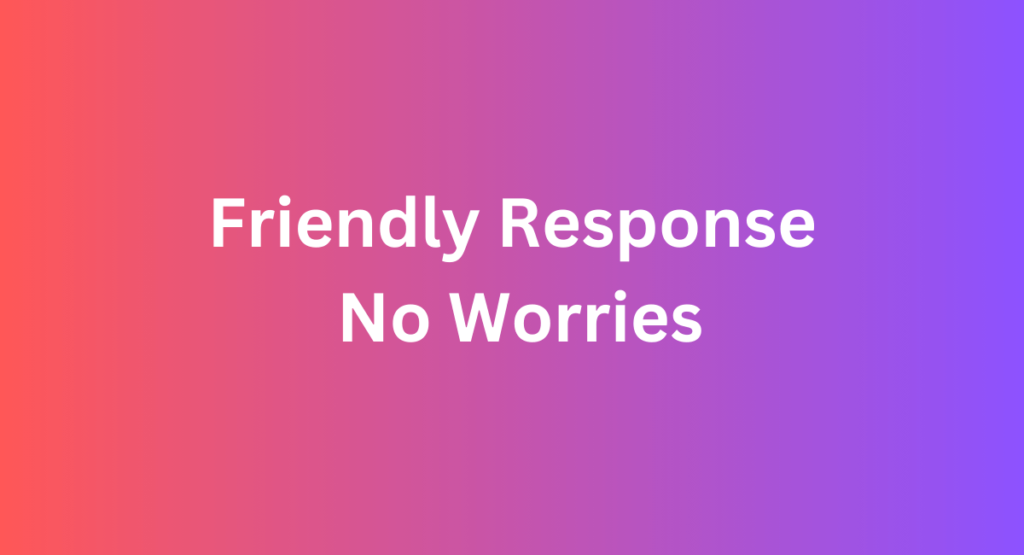
You can reply with a friendly “No worries!” to convey a laid-back and understanding attitude. This response can diffuse tension and reassure the other person that their concern is being taken seriously, while still maintaining a positive and approachable tone.
Remember to always acknowledge and appreciate their understanding.
Friendly Response To “No Worries”
Responding with a friendly “No worries” can lighten the mood and reassure the other person that there are no hard feelings. This simple phrase can foster a positive interaction and maintain a harmonious relationship.
- Acknowledge the situation: Express understanding and empathy towards the other person’s concerns or actions.
- Offer reassurance: Assure them that everything is fine and that there is no need for them to worry.
- Maintain a positive tone: Keep the conversation upbeat and friendly to avoid any misunderstandings or tension.
- Show gratitude: Thank them for their consideration or understanding, reinforcing a sense of appreciation in the interaction.
Here are 10 friendly responses to “No worries”
– **No problem at all! 😊**
– **Don’t even sweat it! 🌟**
– **All good on my end! 👍**
– **No big deal! 😄**
– **Thanks for being cool about it! 🤗**
– **No stress! 🌈**
– **No concerns here! 😎**
– **Fine! 😇**
– **You’re good! 🌻**
– **Thanks for the understanding! 🙌**
Frequently Asked Questions For How To Reply No Worries
When Someone Says No Worries?
When someone says “no worries,” they are assuring you that everything is okay and there’s nothing to be concerned about. It’s a casual way of saying “You’re welcome” or “It’s not a problem. “
How Do You Respond Without Saying No Worries?
Acknowledge the gesture and express your gratitude in response instead. Emphasize appreciation.
How Do You Respond To Don’t Worry?
Respond with reassurance by saying “No need to worry, everything is under control. “
What Is A Better Response Than No Worries?
A more suitable response is “You’re welcome” or “No problem. ” It conveys politeness and acknowledges the gratitude expressed by the person.
Conclusion
Embrace the power of positive language when responding to “No worries. ” Stay genuine and appreciative. Encourage open communication and foster trust in your interactions. Remember, a simple reply can leave a lasting impression. So, keep it light, respectful, and supportive.
Keep the conversation flowing smoothly.


